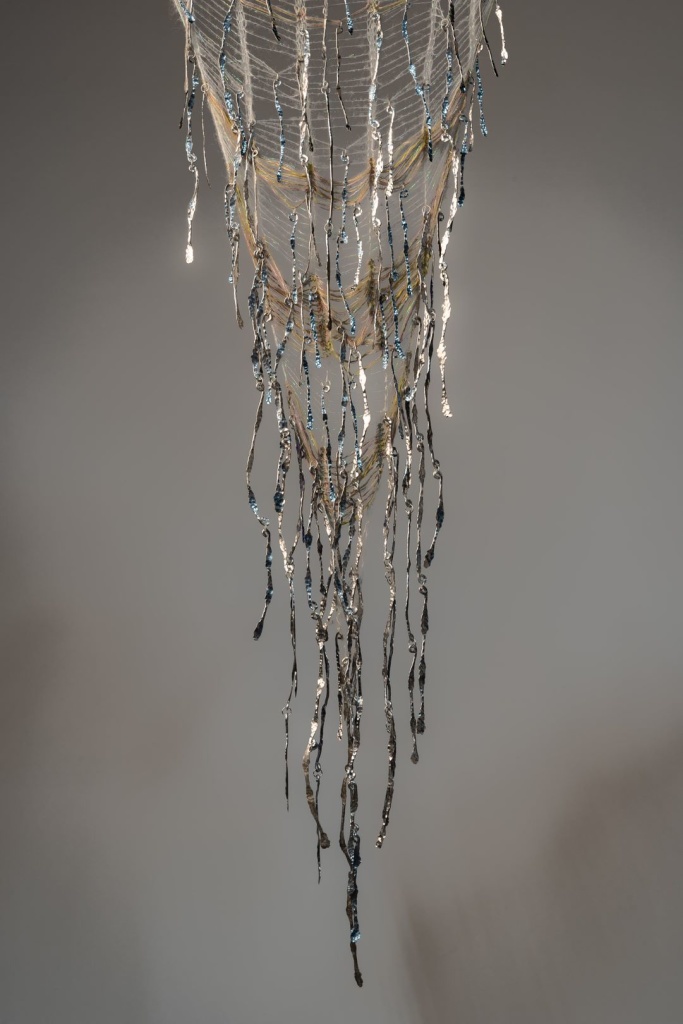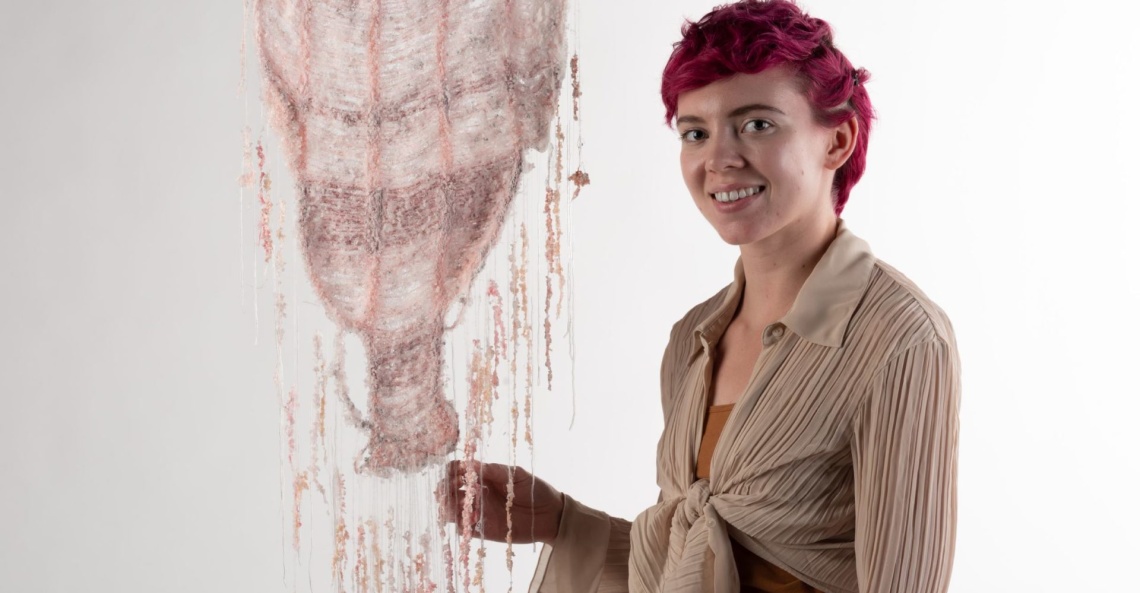
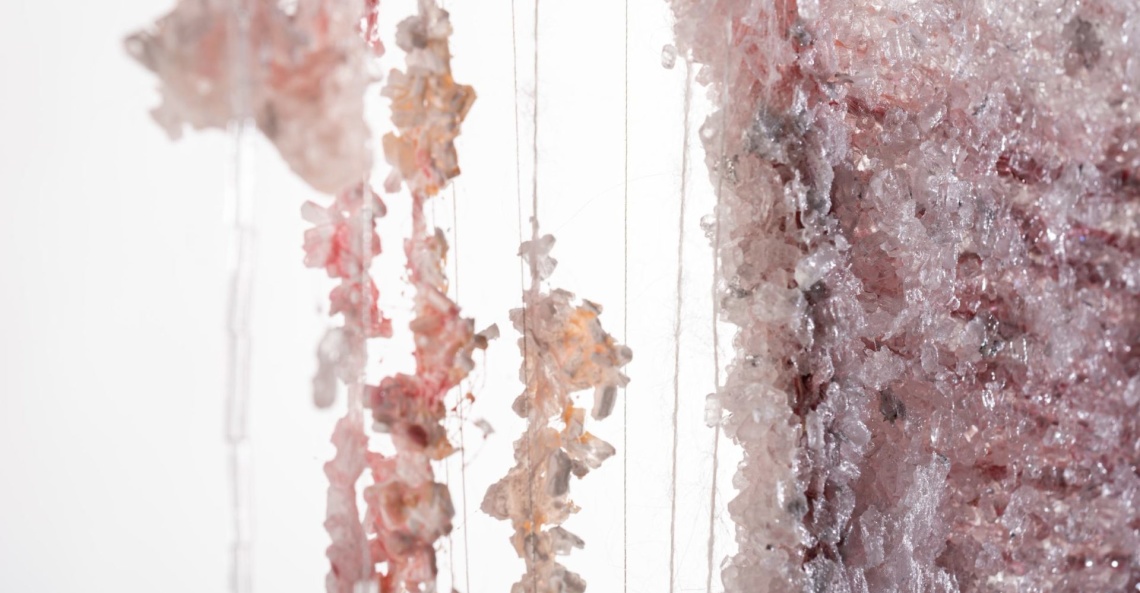
I am a textile designer and artist with a narrative-driven practise. Fascinated by imagined alternate worlds and the characters within them, I create wearable pieces that cross the boundaries between art and fashion. Tools for Empowerment is a triptych of veils that challenges the traditional depiction of women in art and literature as being ‘damsels in distress’, instead evoking a journey towards empowerment. Each delicate machine knitted veil represents a different stage in the transformation. The first veil, representing fragility, is embellished with hand-made metal teardrops. The second veil has salt crystals partially grown on it, representing transformation and the ‘hardening’ of tears. The third veil, inspired by chainmail, is adorned with textured metal links and chains to represent strength and resilience.
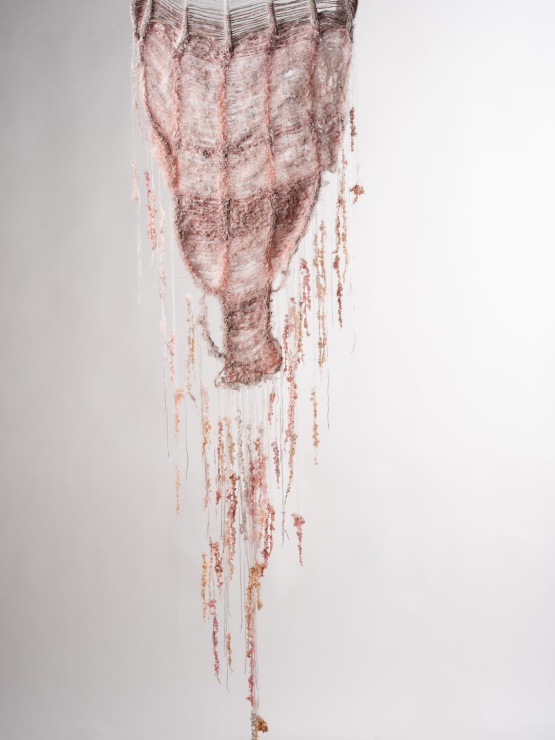
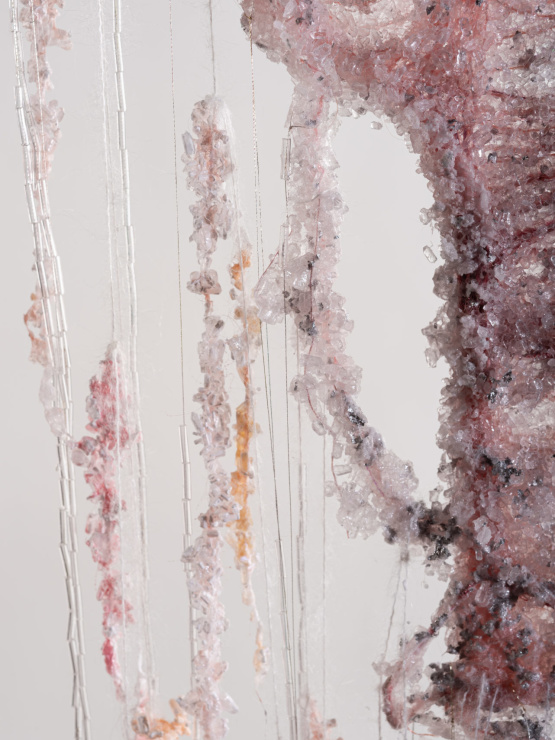
In the age of a highly unsustainable fashion industry, my wearable art pieces offer an alternative to poorly made fast fashion. The timeless pieces can be treasured for generations to come, demonstrating that we can choose to adorn ourselves mindfully whilst making a powerful statement, instead of buying new and discarding after a few wears. I wanted to create an uplifting and inspiring collection that encompasses both beauty and meaning. The veils have been displayed to suggest the status of ceremonial artefacts, as if they had been discovered in an alternate history. When worn, the luxurious, weighted veils give the wearer a sense of grandeur and empowerment.
Community engagement with the visual arts has always been a passion of mine, and after graduating I would like a career in this field alongside my own practise.
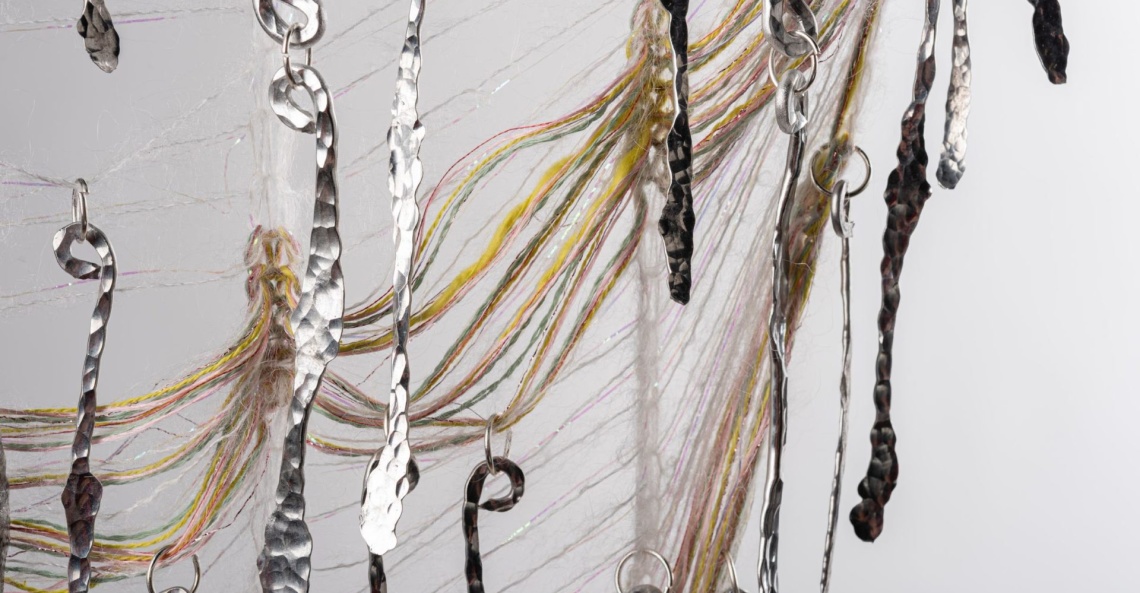
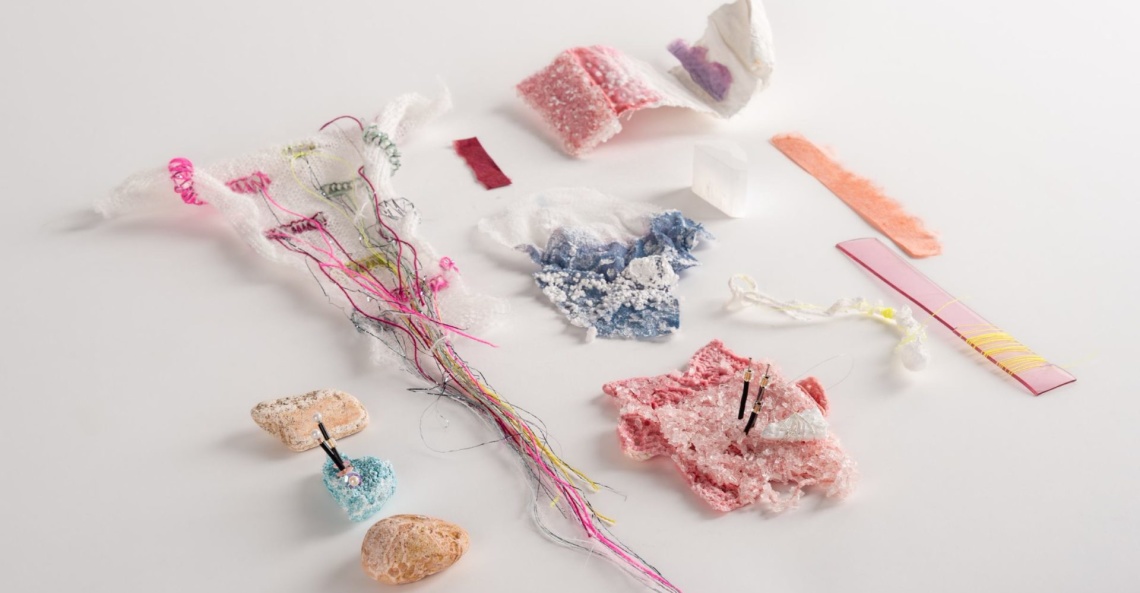
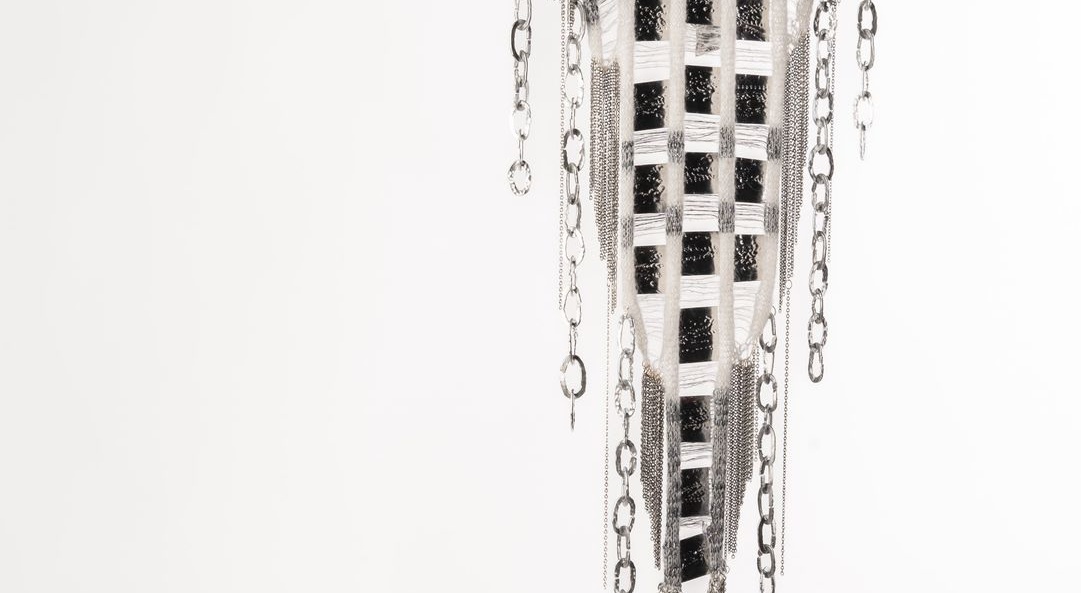
Title: How will fashion be affected by a dystopian future?
Dystopian events have affected society all throughout history – world wars, global pandemics, and natural disasters to name but a few. Meanwhile global warming is another catastrophic dystopian issue facing us all. Throughout these dystopian events, some form of fashion has continued to function, at least since the early modern period in the West. At its most basic, fashion might be defined as a continuous, collective change of habit by which the past is disqualified and the present defined and celebrated; participation in a shared culture of images and/or descriptions; a means for signalling identity, affiliation and aspiration; and a venue for personal and creative expression within a larger practice of conformity.
Fashion is temporal – a sign of the times, affiliative and a juxtaposition of conformity and non-conformity. This has allowed it to thrive throughout trying periods in the past, and will likely do so in the future as well. This essay investigates how the visual iteration of fashion (i.e. the outfits themselves) and the fashion system as a whole might be affected by a dystopian future, be that political, environmental or technological.
